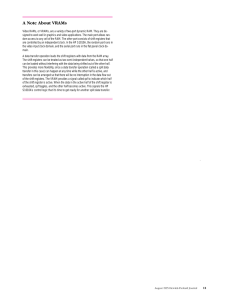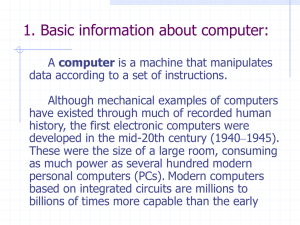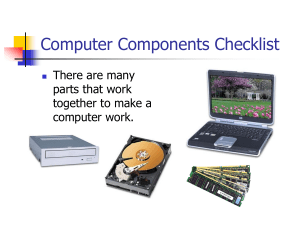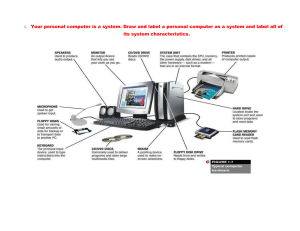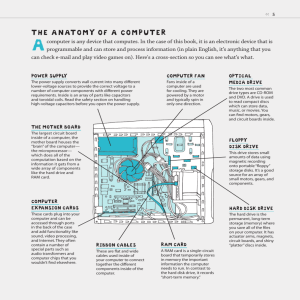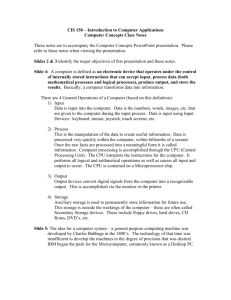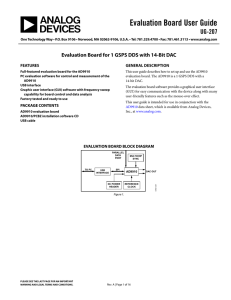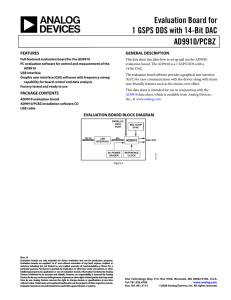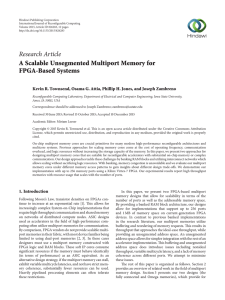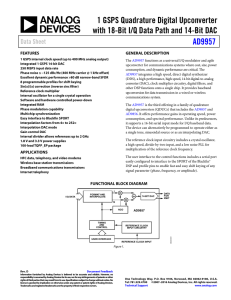Anatomy of a Computer
advertisement
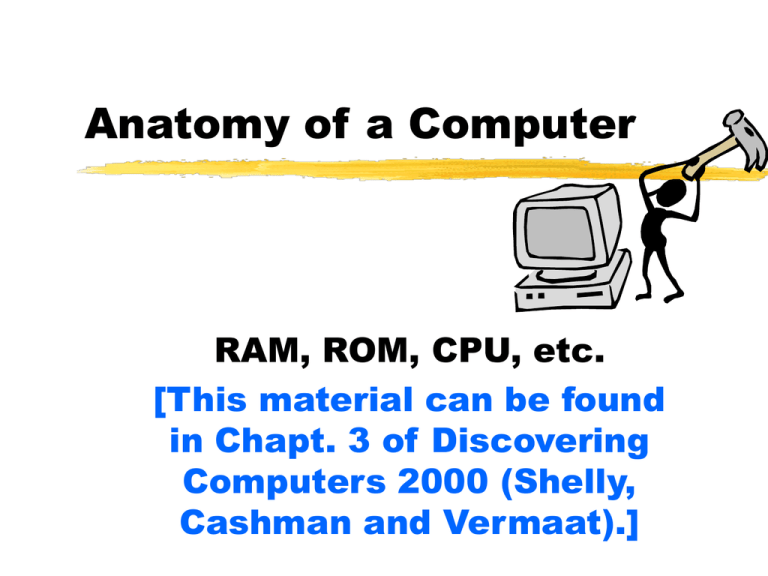
Anatomy of a Computer RAM, ROM, CPU, etc. [This material can be found in Chapt. 3 of Discovering Computers 2000 (Shelly, Cashman and Vermaat).] A chip off the old block Millions of transistors are connected into what is called an integrated circuit or chip The most important chip in a computer is the microprocessor The microprocessor houses the Central Processing Unit (CPU), the “brain” of the computer Ex. The Pentium II is a microprocessor How many? Word size and bus width Computing means moving bits around, so an important question is how many bits can be handled at one time analogy: two-lane, four-lane or eight-lane highway How fast? Each of the computer’s manipulations (instructions) begins a “tick” of the clock So the faster the clock ticks, the faster the computer Clock speed: a measure of how fast the computer is, given in MHz (megahertz millions of cycles per second) Middle number written on LaSalle’s computers How fast? (Cont.) Sometimes one instruction can be started before the previous one was complete Like have a batter on deck So another measure of speed is useful Instructions per second, another measure of speed, is measured in MIPS (millions of instructions per second) The mother of all circuit boards chips and other things are connected together on what is called a circuit board the mother board, a.k.a. the system board, holds the main components of the computer CPU clock connectors expansion slots, ETC. The fan and the sink The chips, especially the microprocessor can get hot heat sink: the strangely shaped metal or ceramic structure sitting on the processor that serves to draw away the heat there’s also a little fan near the processor; that’s often what you hear on old computers A link to the outside world The process of putting information into or getting information out of a computer is called interfacing or input/output (IO) ports are sockets, typically in the back of a computer, where one plugs in the cable connecting the computer to the IO devices Two types serial data sent one bit at a time for modems and some printers cable can be very long ex. MIDI, USB parallel data sent eight bits at a time limit on length of cable ex. SCSI SCSI port Small computer system interface pronounced “scuzzy” allows more than one device to be connected to a single port daisy chain: getting the output for a second output device from the first (rather than directly from the computer), the output for a third can come from the second and so on A connector in every port Ports have connectors, as do cables connectors come in two varieties male: have pins sticking out female: have holes to receive pins Analog to Digital Any measurement that can be converted to an electronic signal (voltage or current) can be directly fed into a computer the original data is often continuous (analog) and must be converted into digital form This signal can be fed in through a port (typically the RS-232 port) so long as the appropriate software is installed In the cards Expansion Slot: A socket designed to hold the circuit board for the device, such as a sound or video card, that adds capability to the computer system Adapter cards: additional circuitry and chips that extend your PC’s capabilities allowing you to customize it Some types of cards video or graphics card: enhances computer’s ability to convert output into video and send it to the monitor Sound card: improves your computer’s sound capabilities, be it input (microphone) or output (speakers) internal modem: allows computer to connect to networks via phone lines and such Plug and play refers to computer’s capability to figure out what to do when new expansion cards and devices are added this way the user does not have to know how to “configure” the system Memories Saving information we have entered (e.g. onto floppies) is referred to as “storage;” it is long term and slow by computer standards (storage memory) Before we save the data, it is in the computer’s memory, i.e. in memory chips, which hold the information temporarily Memory also holds the instructions a computer needs to operate ROM Read Only Memory This memory is loaded up by the manufacturer (some is programmable) contains low-level instructions for the computer Not lost when the computer is turned off “nonvolatile” memory “stored program concept” RAM Random Access Memory The memory the user uses The programs one loads and the data one enters are here Lost when the computer is turned off “volatile” memory random? Random Vs. Sequential A cassette tape is sequential access; you have to go through song one and two to get to song three A CD is random access; you can jump directly to song three Some Types of RAM Dynamic RAM (D-RAM): dynamic means changing, which for memory is not necessarily a good thing, so dynamic memory must be continually refreshed Synchronous DRAM — when the memory update and clock are better coordinated (“in synch”) Static RAM (SRAM) doesn’t need constant refreshing, is faster but more expensive than dynamic Cache pronounced “cash” it’s an area of high-speed memory (often SRAM) Instead of looking through the slower RAM, data is looked for here first, a speedy intermediary You often encounter the term while surfing the web; data from a web site can be stored in a cache Buffer and Clipboard Buffer: where data coming in (from input devices) or going out (to output devices) is stored until the transaction is complete Clipboard: Memory location where data is placed during an application such as word processing (cutting or copying puts data on the clipboard); it is also used to transfer data from one application to another (e.g. from Excel to Word)

